Year 6
Australia in the past and present and its connections with a diverse world
The Year 6 curriculum focuses on the social, economic and political development of Australia as a nation, particularly after 1900, and Australia's role within a diverse and interconnected world today. Students explore the events and developments that shaped Australia as a democratic nation and stable economy, and the experiences of the diverse groups who have contributed to and are/were affected by these events and developments, past and present. Students investigate the importance of rights and responsibilities and informed decision-making, at the personal level of consumption and civic participation, and at the national level through studies of economic, ecological and government processes and systems. In particular, students examine Asia's natural, demographic and cultural diversity, with opportunities to understand their connections to Asian environments. These studies enable students to understand how they are interconnected with diverse people and places across the globe.
The content provides opportunities for students to develop humanities and social sciences understanding through key concepts including significance; continuity and change; cause and effect; place and space; interconnections; roles, rights and responsibilities; and perspectives and action. These concepts may provide a focus for inquiries and be investigated across sub-strands or within a particular sub-strand context.
The content at this year level is organised into two strands: knowledge and understanding, and inquiry and skills. The knowledge and understanding strand draws from four sub-strands: history, geography, civics and citizenship and economics and business. These strands (knowledge and understanding, and inquiry and skills) are interrelated and have been developed to be taught in an integrated way, which may include integrating with content from the sub-strands and from other learning areas, and in ways that are appropriate to specific local contexts. The order and detail in which they are taught are programming decisions.
Inquiry Questions
A framework for developing students' knowledge, understanding and skills is provided by inquiry questions. The following inquiry questions allow for connections to be made across the sub-strands and may be used or adapted to suit local contexts: inquiry questions are also provided for each sub-strand that may enable connections within the humanities and social sciences learning area or across other learning areas.
- How have key figures, events and values shaped Australian society, its system of government and citizenship?
- How have experiences of democracy and citizenship differed between groups over time and place, including those from and in Asia?
- How has Australia developed as a society with global connections, and what is my role as a global citizen?
(source: www.australiancurriculum.edu.au)
Achievement Standard
By the end of Year 6, students explain the significance of an event/development, an individual and/or group. They identify and describe continuities and changes for different groups in the past and present. They describe the causes and effects of change on society. They compare the experiences of different people in the past. Students describe, compare and explain the diverse characteristics of different places in different locations from local to global scales. They describe how people, places, communities and environments are diverse and globally interconnected and identify the effects of these interconnections over time. Students explain the importance of people, institutions and processes to Australia's democracy and legal system. They describe the rights and responsibilities of Australian citizens and the obligations they may have as global citizens. Students recognise why choices about the allocation of resources involve trade-offs. They explain why it is important to be informed when making consumer and financial decisions. They identify the purpose of business and recognise the different ways that businesses choose to provide goods and services. They explain different views on how to respond to an issue or challenge.
Students develop appropriate questions to frame an investigation. They locate and collect useful data and information from primary and secondary sources. They examine sources to determine their origin and purpose and to identify different perspectives in the past and present. They interpret data to identify, describe and compare distributions, patterns and trends, and to infer relationships, and evaluate evidence to draw conclusions. Students sequence information about events, the lives of individuals and selected phenomena in chronological order and represent time by creating timelines. They organise and represent data in a range of formats, including large- and small-scale maps, using appropriate conventions. They collaboratively generate alternative responses to an issue, use criteria to make decisions and identify the advantages and disadvantages of preferring one decision over others. They reflect on their learning to propose action in response to an issue or challenge and describe the probable effects of their proposal. They present ideas, findings, viewpoints and conclusions in a range of communication forms that incorporate source materials, mapping, graphing, communication conventions and discipline-specific terms.
(source: www.australiancurriculum.edu.au)
Achievement Standard
By the end of Year 6 students explain the significance of an event/development, an individual or group. They identify and describe continuities and changes for different groups in the past. They describe the causes and effects of change on society. They compare the experiences of different people in the past.
Students sequence information about events and the lives of individuals in chronological order and represent time by creating timelines. When researching, students develop appropriate questions to frame a historical inquiry. They identify a range of primary and secondary sources and locate, collect, organise and categorise relevant information to answer inquiry questions. They analyse information or sources for evidence to determine their origin and purpose and to identify different perspectives. Students develop texts, particularly narrative recounts and descriptions. In developing these texts and organising and presenting their information, they use historical terms and concepts, and incorporate relevant sources.
(source: www.australiancurriculum.edu.au)
Achievement Standard
By the end of Year 6, students describe the location of places in selected countries in absolute and relative terms. They describe and explain the diverse characteristics of places in different locations from local to global scales. They describe the interconnections between people in different places, identify factors that influence these interconnections and describe how interconnections change places and affect people. They identify and compare different possible responses to a geographical challenge.
Students develop appropriate geographical questions to frame an inquiry. They locate, collect and organise useful data and information from primary and secondary sources. They record and represent data and the location of places and their characteristics in different graphic forms, including large-scale and small-scale maps that use cartographic conventions of border, source, scale, legend, title and north point. Students interpret maps, data and other information to identify, describe and compare spatial distributions, patterns and trends, to infer relationships and to draw conclusions. They present findings and ideas using geographical terminology and digital technologies in a range of communication forms. They propose action in response to a geographical challenge and describe the probable effects of their proposal.
(source: www.australiancurriculum.edu.au)
Achievement Standard
By the end of Year 6, students explain the role and importance of people, institutions, and processes to Australia's democracy and legal system. They describe the rights and responsibilities of Australian citizens and the obligations they may have as global citizens.
Students develop appropriate questions to frame an investigation about the society in which they live. They locate, collect and organise useful information from a range of different sources to answer these questions. They examine sources to determine their origin and purpose and describe different perspectives. They evaluate information to draw conclusions. When planning for action, they identify different points of view and solutions to an issue. They reflect on their learning to identify the ways they can participate as citizens in the school or elsewhere. They present ideas, findings, viewpoints and conclusions in a range of communication forms that incorporate source materials and civics and citizenship terms and concepts.
(source: www.australiancurriculum.edu.au)
Achievement Standard
By the end of Year 6, students recognise why choices about the allocation of resources involve trade-offs. They explain why it is important to be informed when making consumer and financial decisions. They identify the purpose of business and recognise the different ways that businesses choose to provide goods and services.
Students develop appropriate questions to frame an investigation about an economics or business issue, challenge or event. They locate and collect useful data and information from primary and secondary sources. They examine sources to determine their origin and purpose and evaluate evidence to draw conclusions. They interpret, organise and represent data in a range of formats using appropriate conventions. They generate alternative responses to an issue or challenge and identify the advantages and disadvantages of preferring one decision over others. They reflect on their learning to propose action in response to a challenge and identify the possible effects of their decision. They apply economics and business knowledge and skills to familiar problems. Students present ideas, findings, viewpoints and conclusions in a range of communication forms that incorporate source materials and economics and business terms.
(source: www.australiancurriculum.edu.au)
- Free Plan
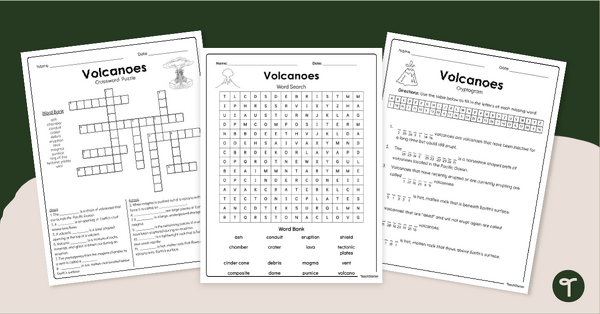
Free Volcano Worksheets
Download a set of free volcano worksheets to introduce your students to vocabulary and concepts related to volcanoes and volcanic disasters.
- Plus Plan

The World's Continents and Oceans – Teaching Presentation
Explore the seven continents and five oceans of the world with this comprehensive teaching presentation.
- Plus Plan
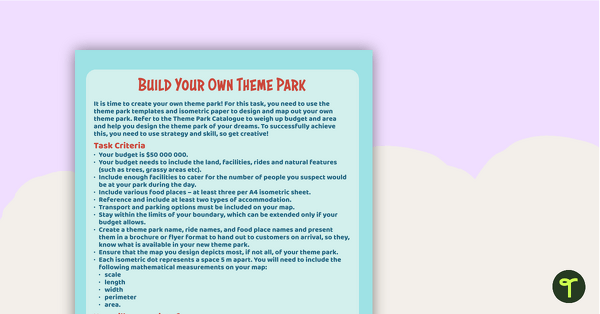
Build Your Own Theme Park – Project
A project that gives students the opportunity to learn through building their own theme park.
- Plus Plan
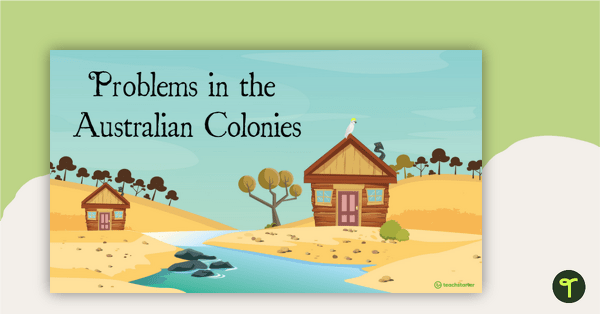
Problems in the Australian Colonies PowerPoint
A 19 slide editable PowerPoint to use in the classroom when learning about the problems that took place in the colonies of Australia.
- Free Plan
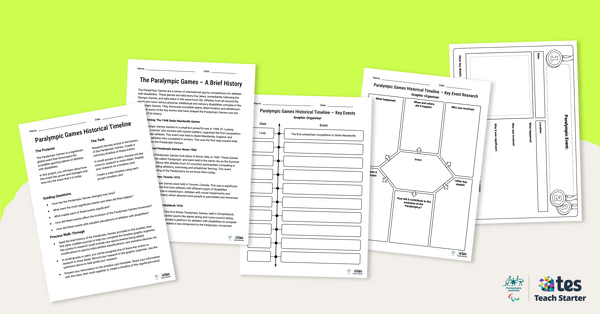
Paralympic Games Historical Timeline – Inquiry-Based Project
Introduce your students to the rich history of the Paralympic Games with this inquiry-based learning project.
- Plus Plan
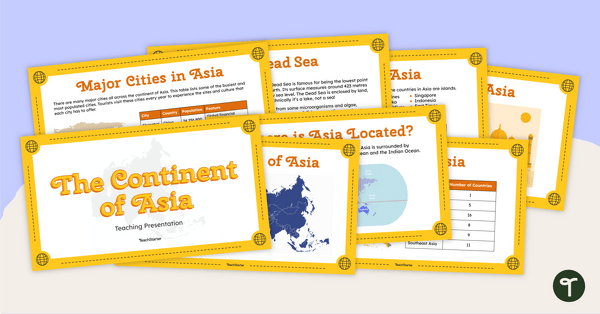
The Continent of Asia - Teaching Presentation
Familiarise your students with the physical and human geography of Asia with this comprehensive teaching presentation.
- Free Plan
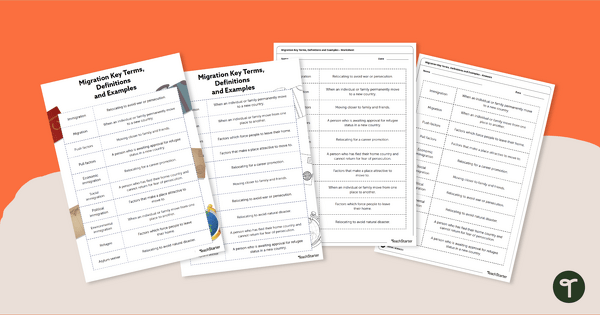
Human Migration Match-Up Activity
A match-up activity linking human migration terms, examples and definitions.
- Free Plan
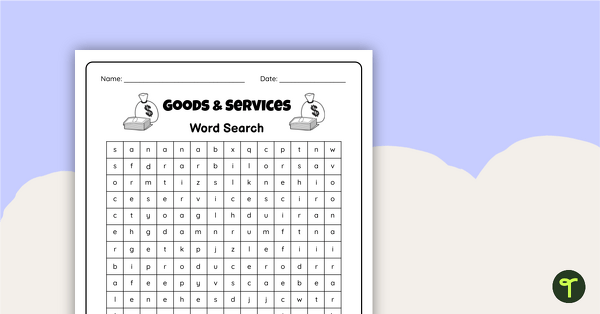
Goods and Services Word Search
Stretch your students’ business vocabulary with this economics-focused word search that features examples of goods and services.
- Plus Plan
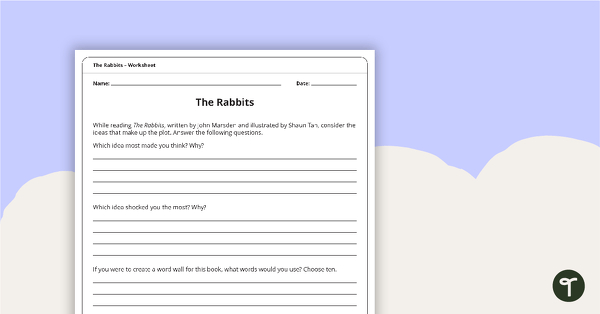
The Rabbits – Worksheet
A worksheet that explores the ideas and issues within the plot of The Rabbits by John Marsden.
- Plus Plan
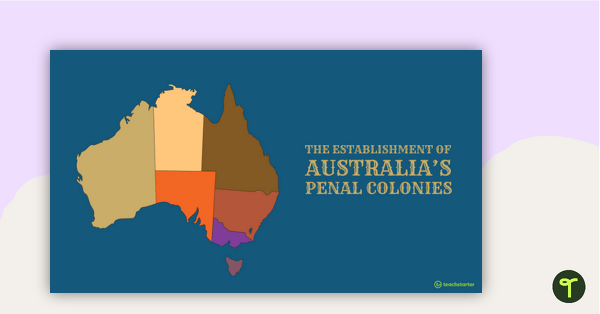
The Establishment of Australia's Colonies PowerPoint
A 32 slide editable PowerPoint to use in the classroom when learning about the establishment of British colonies in Australia.
- Plus Plan
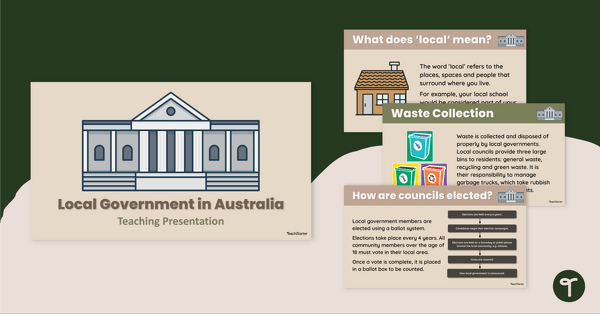
Local Government Australia - Teaching Slides
Explore the ins and outs of local government in Australia with this in-depth set of teaching slides.
- Plus Plan
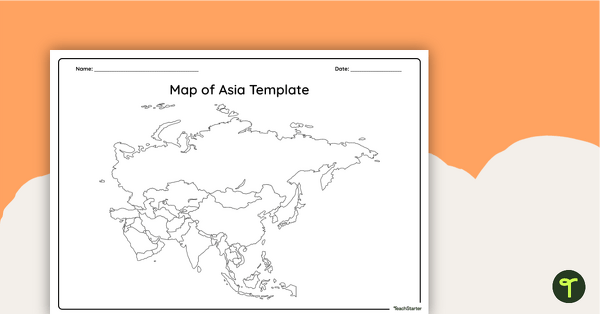
Blank Map of Asia - Template
Record and represent data about the location of significant places with this printable blank map of the continent of Asia.
- Plus Plan
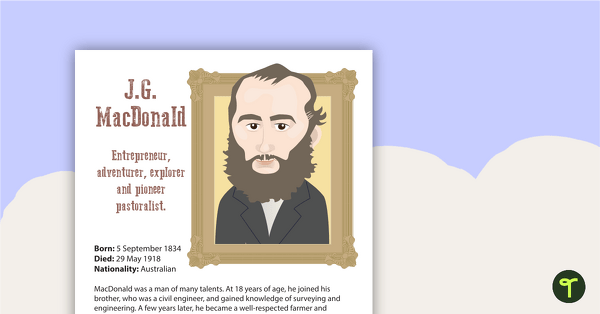
Significant Australian Individuals - 1800s to early 1900s
A set of posters highlighting the achievements of some of the most well-known Australians from the late 1800s and early 1900s.
- Plus Plan
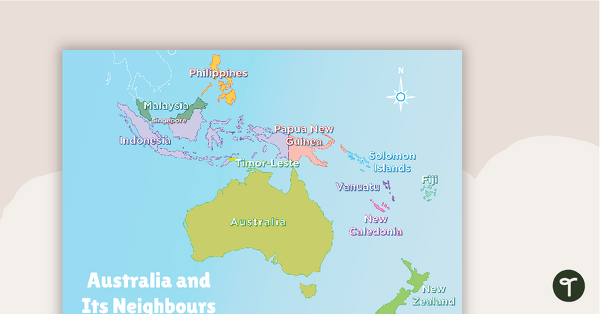
Australia and Its Neighbours - Poster and Labelling Activity
A set of maps and worksheet for students to use when looking at Australia and its neighbours.
- Free Plan
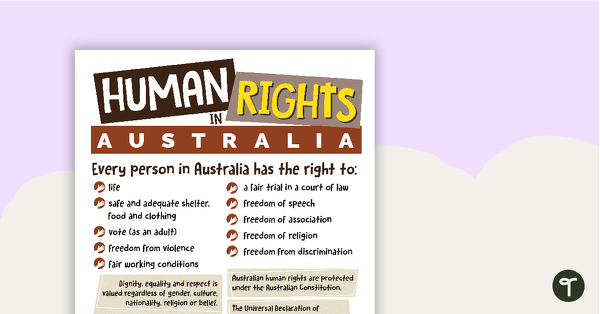
Human Rights in Australia - Infographic Poster
A 2-page infographic poster displaying facts about Australian human rights.
- Plus Plan
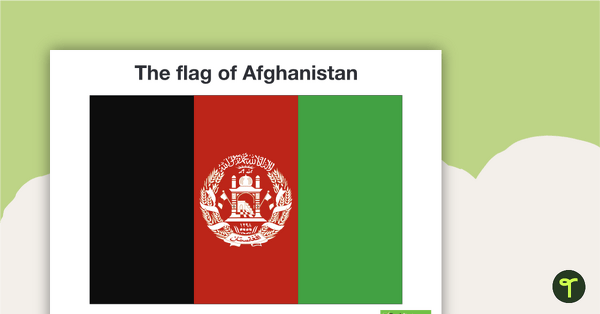
Asian Flags
A collection of 38 flags from Asian countries.
- Free Plan
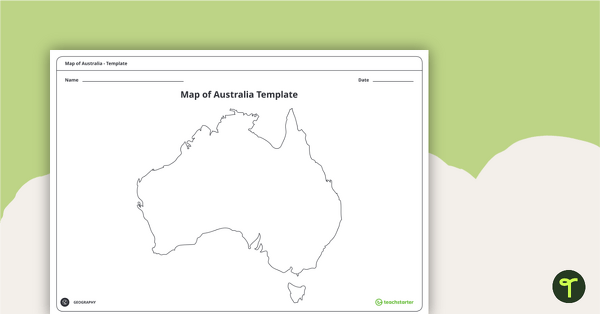
Blank Map of Australia - Template
Record and represent data about the location of significant places with this printable blank map of the continent of Australia.
- Plus Plan
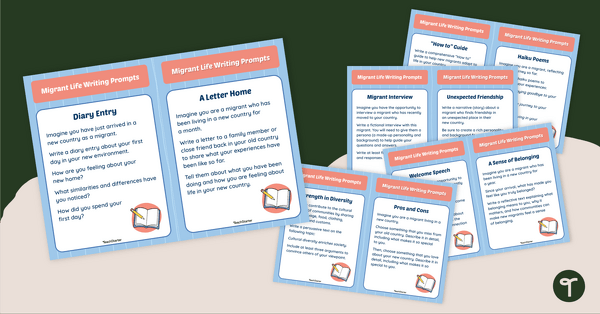
Migrant Life Writing Prompts
Spark thoughtful classroom discussions and meaningful writing about migrant life with these engaging writing prompts for upper primary students.
- Plus Plan

History of Australian Immigration PowerPoint
Introduce your students to the history of Australian immigration with an in-depth Australian Immigration PowerPoint slide deck.
- Plus Plan
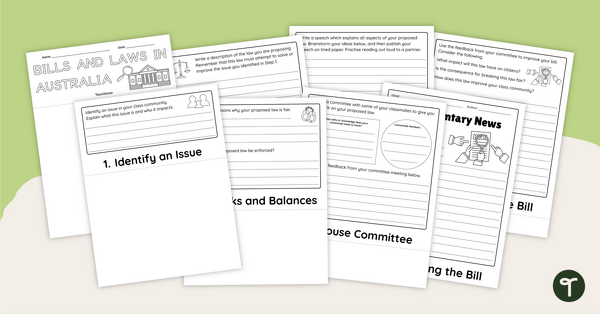
Bills and Laws in Australia Flipbook
Discover how bills become Australian law with this student-directed inquiry task.
- Plus Plan
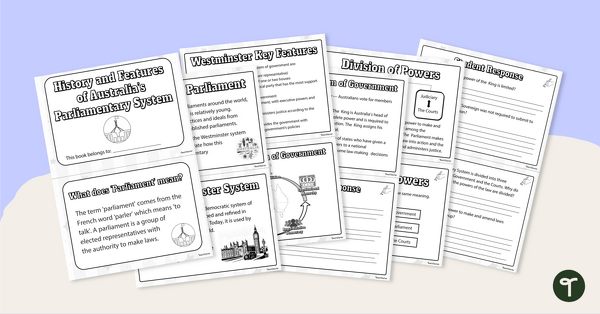
History and Features of Australia's Parliamentary System - Mini-Book
Discover the history and features of Australia’s parliamentary system with this informative printable mini-book.
- Plus Plan
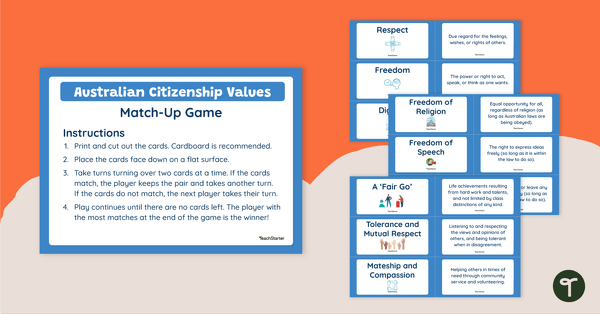
Australian Citizenship Values - Match-Up Activity
Learn key vocabulary terms related to Australia’s citizenship values with this set of hands-on match-up cards.
- Plus Plan
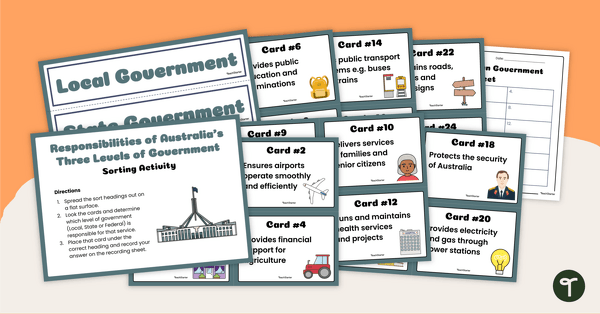
Responsibilities of Australia's Three Levels of Government - Sorting Activity
Explore the roles and responsibilities of Australia's three levels of government with this hands-on sorting activity.
- Free Plan
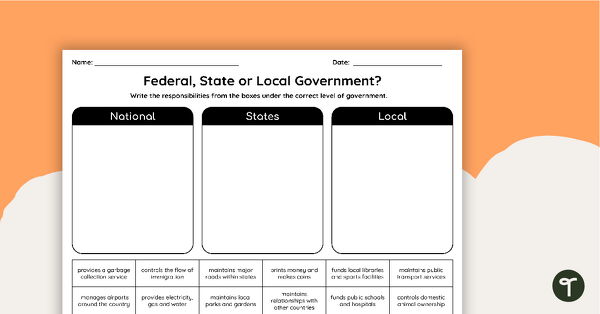
Federal, State or Local Government? - Worksheet
Familiarise your students with the duties of local, state and federal governments in Australia with this sorting worksheet.
- Plus Plan
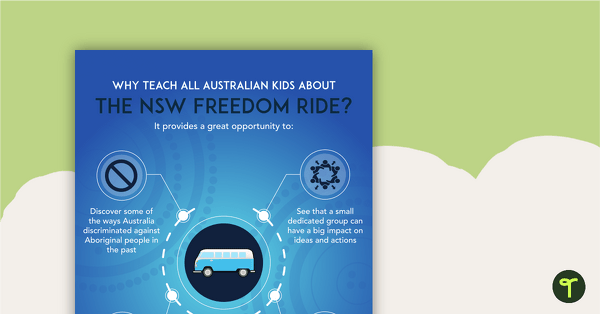
Why Teach About the NSW Freedom Ride? Poster
An educational poster providing a rationale for teaching Australian children about the NSW Freedom Ride.
- Plus Plan
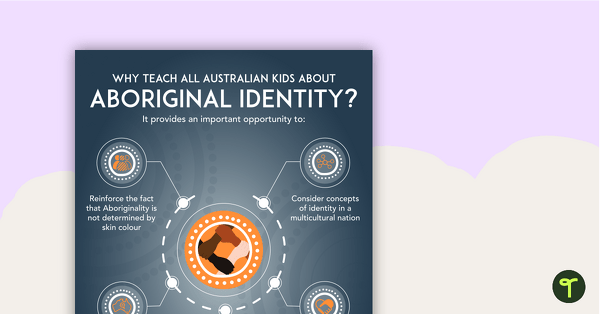
Why Teach About Aboriginal Identity? Poster
An educational poster providing a rationale for teaching Australian children about Aboriginal identity.
- Free Plan
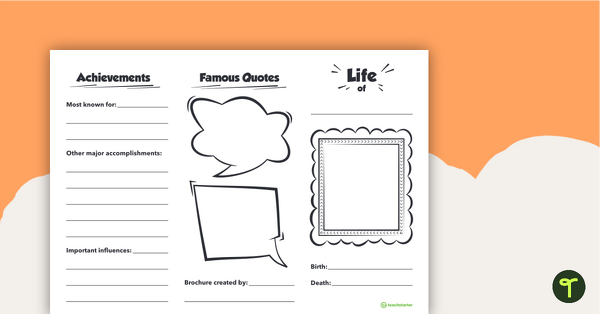
Biography Brochure Template
A brochure template to use when writing biographies.
- Plus Plan
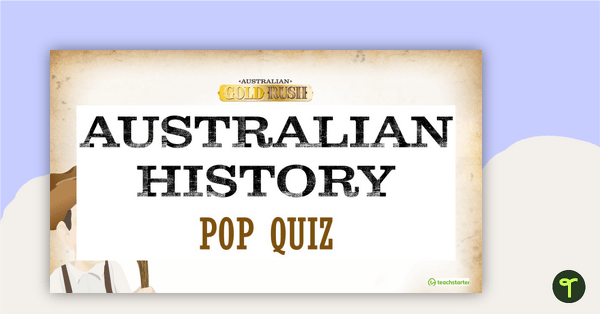
Australian History Pop Quiz – Teaching Presentation
A teaching presentation that serves as a pop quiz to explore students' knowledge of Australian history and the culture we see today.
- Plus Plan
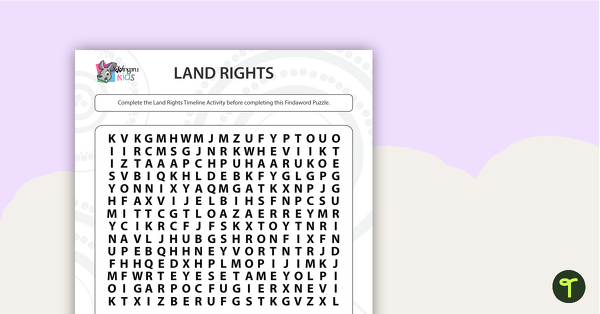
Land Rights Word Search - Upper Primary
A printable Land Rights Word Search worksheet for your upper primary school students to complete.
- Plus Plan

Land Rights Timeline Worksheet
A printable Land Rights Timeline worksheet for your students to complete in your classroom.
- Plus Plan
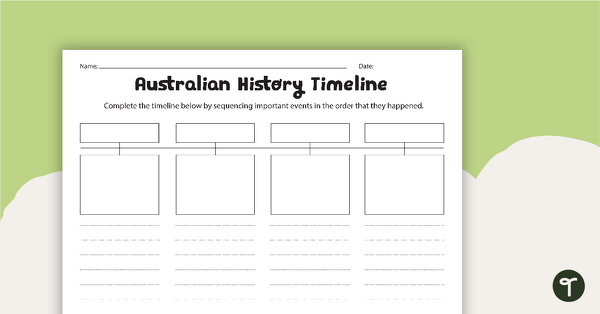
Australian History Timeline
A worksheet for students to record information about four significant Australian events.
- Free Plan
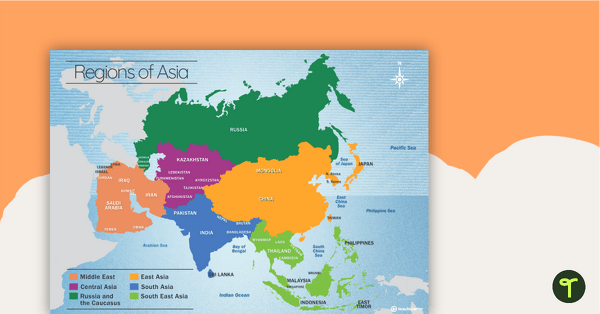
Map of the Regions of Asia
A map showing the layout, regions and major countries of Asia.